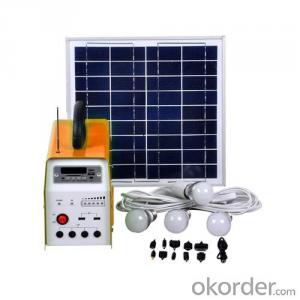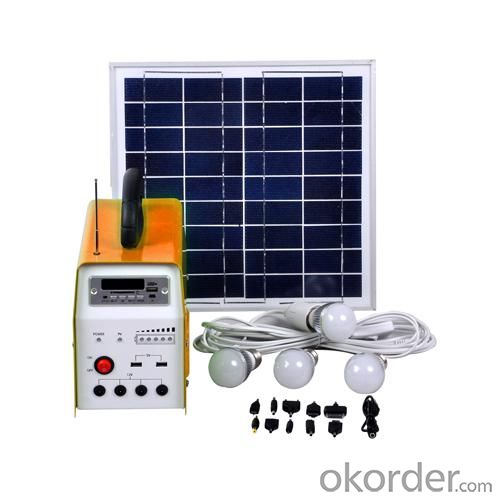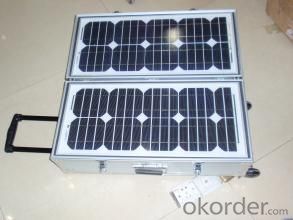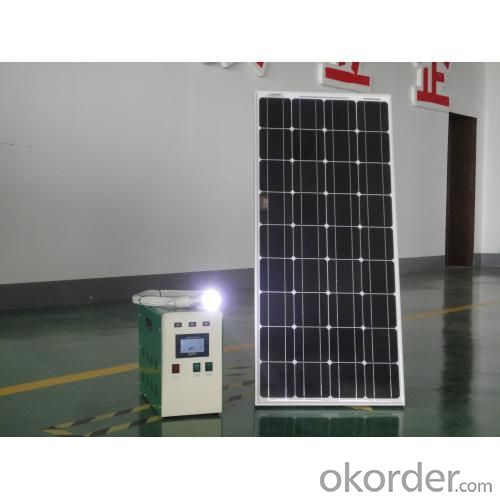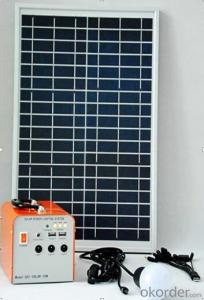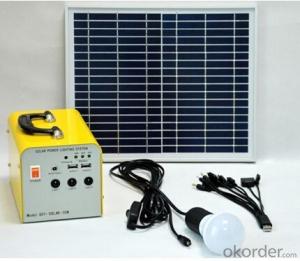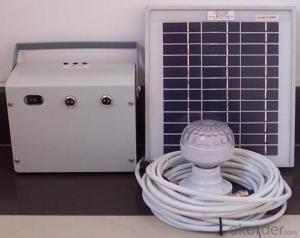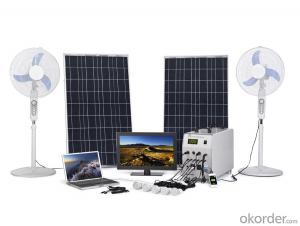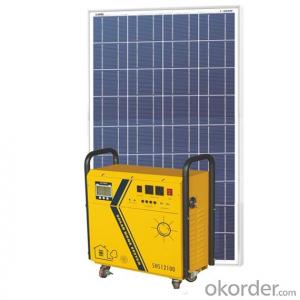Solar Energy Systems 772 - An-S100W Portable Solar System
- Loading Port:
- Shanghai
- Payment Terms:
- TT OR LC
- Min Order Qty:
- 0 set
- Supply Capability:
- 10000 set/month
OKorder Service Pledge
OKorder Financial Service
You Might Also Like
Specification
Description of Solar Portable System AN-S100W
Compatible portable solar power supply, also called solar mobile power, it includes: solar panel, charge controller, discharge controller, electric charge controller, inverter, outside enlarge capacity interface and battery, etc. Photovoltaic portable power supply can work in solar energy and ordinary power two modes, and can automatically switch. Photovoltaic portable power supply is used widely is the emergency relief, tourism, army, geological prospecting, archaeology, schools, hospitals, Banks, gas stations, comprehensive building, highway, substation, family camping or outdoor activities such as emergency power ideal power supply equipment.
Specifications of Solar Portable System AN-S100W
1. Solar Panel: 100W 18V
2. Battery: 12V60AH lead-acid battery
Input terminal: 1 DC input, 14.8V; 2 solar input terminal (+,-), 18V.
Output terminal: 8 output terminals, including:
1x USB output, 5V 1A;
5x DC outputs, 12V 1A;
2xAC220V outputs
Switch: 2pcs; left one for DC12V, right one for AC220V
Indication lamp: 2 pcs; Red one is for charging indication, Green one is for operating indication.
Accessories of Solar Portable System AN-S100W
1. 2pcs 3W led bulbs;
2. 1pc 5m connection wire between solar panel and cabinet;
3. 2pcs lamp holder with 3m wire;
4. 1pc AC charger
Technical Data of Solar Portable System AN-S100W
| Internal Package Size (cm) | 63*47*57 (panel extra) |
| Packing QTY | 1 |
| External Package Size (cm) | 63*47*57 (panel extra) |
IMages of Solar Portable System AN-S100W
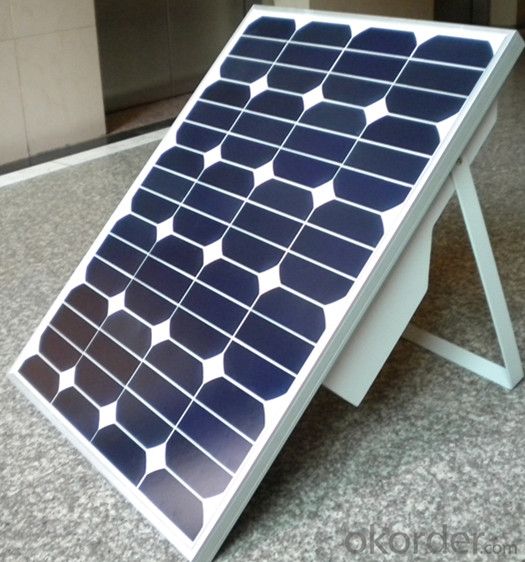

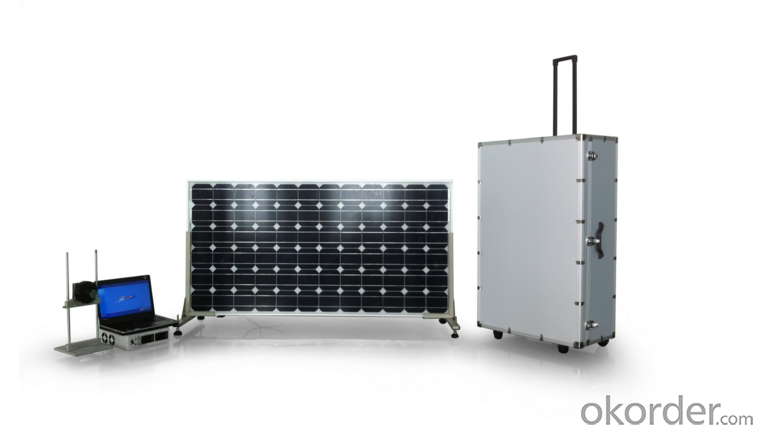
FAQ:
1. How long will my inquiry get response?
Your inquiry related to our products or prices will be replied within 24 hours.
2. Can I get professional service and suggestion?
Well-trained and experienced staffs to answer all your questions in fluent English.
3. Do you accept OEM or customized design?
OEM & ODM, any your customized lightings we can help you to design and put into product.
4. What if I need specific design?
Distributorship are offered for your unique design and some our current models.
- Q: What are the environmental impacts of solar energy systems?
- Solar energy systems have minimal environmental impacts compared to other forms of energy generation. Some potential impacts include the production and disposal of solar panels, the use of land for solar installations, and the need for rare earth minerals in panel production. However, these impacts are relatively small and can be mitigated through proper recycling and responsible land use. Additionally, solar energy systems produce no greenhouse gas emissions during operation, helping to reduce air pollution and combat climate change. Overall, the environmental benefits of solar energy far outweigh its potential impacts.
- Q: Can solar energy systems be used in commercial agriculture?
- Yes, solar energy systems can be used in commercial agriculture. Solar panels can be installed on agricultural buildings or in open fields to generate clean and renewable energy. This energy can power various agricultural operations such as irrigation systems, crop drying, and greenhouse heating. Solar energy systems offer cost savings, reduce reliance on fossil fuels, and contribute to sustainable farming practices.
- Q: Can solar energy systems be used to power large industrial facilities?
- Yes, solar energy systems can be used to power large industrial facilities. Advances in solar technology have made it possible to generate electricity on a large scale through solar panels or concentrated solar power systems. These systems can provide a significant amount of power required by industrial facilities, reducing their reliance on traditional energy sources and minimizing their carbon footprint.
- Q: Can solar energy systems be used in powering electric fences or security systems?
- Yes, solar energy systems can be used to power electric fences or security systems. Solar panels can convert sunlight into electricity, which can then be stored in batteries and used to power these systems. This provides a reliable and sustainable source of energy, especially in remote areas where access to conventional power sources may be limited. Additionally, solar-powered systems are cost-effective and environmentally friendly, making them an ideal choice for powering electric fences and security systems.
- Q: Are there any tax credits available for installing a solar energy system?
- Installing a solar energy system grants access to tax credits. The federal government provides the Solar Investment Tax Credit (ITC), enabling homeowners and businesses to deduct a portion of the installation cost from their federal taxes. The ITC currently offers a 26% tax credit for systems installed until the end of 2022. However, it is crucial to note that starting in 2023, the tax credit will decrease to 22% and exclusively apply to commercial installations. Moreover, certain states extend their own tax incentives for solar energy systems, such as tax credits, rebates, or exemptions. It is advisable to consult your state or local government to determine the availability of specific tax credits in your area.
- Q: Can solar energy systems be used for air conditioning?
- Yes, solar energy systems can be used for air conditioning through the use of solar-powered air conditioning units or by using solar energy to power traditional air conditioning systems.
- Q: Can solar energy systems be used for heating water in commercial buildings?
- Yes, solar energy systems can be used for heating water in commercial buildings. Solar water heating systems utilize the sun's energy to heat water, which can then be used for various purposes like showers, dishwashing, and laundry in commercial settings. These systems are cost-effective, environmentally friendly, and can significantly reduce energy consumption.
- Q: Can a solar energy system be installed in areas with heavy snowfall?
- Indeed, it is possible to install a solar energy system in regions characterized by heavy snowfall. Although the efficiency of solar panels may be affected by heavy snow, their effectiveness can still be ensured through proper design and installation. The following factors should be taken into account: 1. Tilt and angle: Solar panels are typically positioned at an angle to maximize sun exposure. In snowy areas, panels can be tilted at a steeper angle, facilitating the easy sliding off of snow. 2. Snow removal: Regularly clearing snow from the panels is essential to maintain their performance. This can be done manually or by employing automated systems equipped with brushes or heating elements that melt the snow. 3. Orientation: Orienting the solar panels towards the south or the direction of maximum sunlight can help minimize the impact of heavy snowfall. This ensures that once the snow melts, the panels can promptly resume their normal operation. 4. Adequate spacing: Ensuring sufficient space between solar panels prevents the accumulation of snow on one panel from affecting the entire system. This enables continuous energy production, even if some panels are temporarily covered in snow. 5. System monitoring: The installation of a monitoring system can help identify any issues related to snow accumulation or reduced energy production. It allows for timely intervention and maintenance to guarantee optimal performance. Although heavy snowfall might cause a temporary reduction in energy production, a well-designed solar energy system can still be a feasible option in areas with such weather conditions. It is imperative to consult experienced solar installers who can devise and implement a system capable of withstanding and adapting to heavy snowfall.
- Q: Can solar energy systems be used in areas with limited access to solar batteries?
- Yes, solar energy systems can still be used in areas with limited access to solar batteries. In such cases, the solar energy generated during the day can be directly consumed or stored temporarily in alternative energy storage systems like capacitors or flywheels. These systems can be used to power devices or provide electricity during periods of low or no sunlight, ensuring a continuous and reliable energy supply even without solar batteries.
- Q: How do I calculate the return on investment for a solar energy system?
- To calculate the return on investment (ROI) for a solar energy system, you need to consider the initial cost of the system, the annual savings or income generated by the system, and the payback period. 1. Determine the initial cost: This includes the cost of purchasing and installing the solar panels, inverters, wiring, and any additional equipment or installation charges. 2. Estimate the annual savings or income: Calculate the amount of money you will save or earn each year by using solar energy instead of relying solely on traditional energy sources. This can be done by estimating the kilowatt-hour (kWh) production of your system and multiplying it by the local electricity rate. Additionally, consider any feed-in tariffs or tax credits you may be eligible for. 3. Calculate the payback period: Divide the initial cost by the annual savings or income to determine how many years it will take to recover your investment. For example, if the initial cost is $20,000 and the annual savings are $2,000, the payback period would be 10 years ($20,000 / $2,000). 4. Calculate the ROI: Once the payback period is determined, subtract it from the expected lifespan of the solar energy system. Divide the remaining years by the payback period and multiply by 100 to get the ROI percentage. For example, if the expected lifespan is 25 years and the payback period is 10 years, the ROI would be 60% ((25-10) / 10 * 100). It's important to note that this calculation provides an estimate and does not account for factors like maintenance costs, inflation, or changes in energy prices. Additionally, consider other benefits such as reduced carbon footprint and increased property value when evaluating the ROI of a solar energy system.
Send your message to us
Solar Energy Systems 772 - An-S100W Portable Solar System
- Loading Port:
- Shanghai
- Payment Terms:
- TT OR LC
- Min Order Qty:
- 0 set
- Supply Capability:
- 10000 set/month
OKorder Service Pledge
OKorder Financial Service
Similar products
Hot products
Hot Searches
Related keywords
